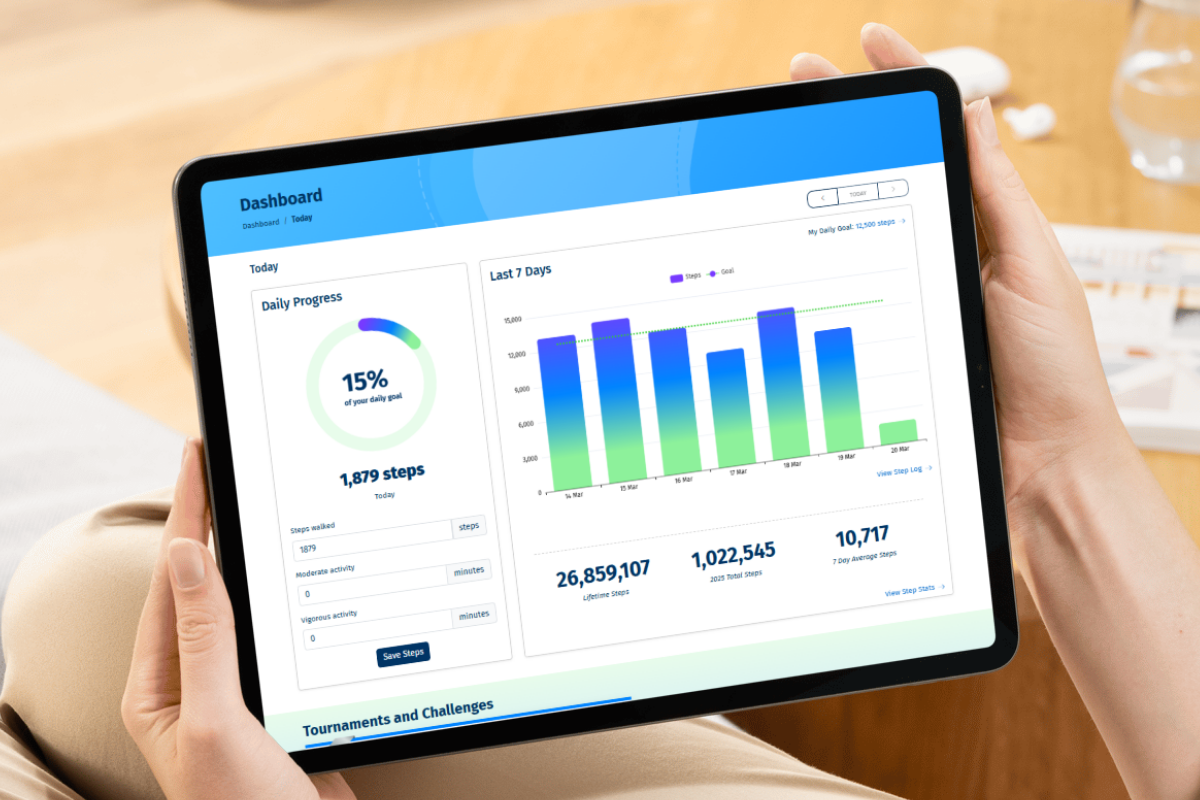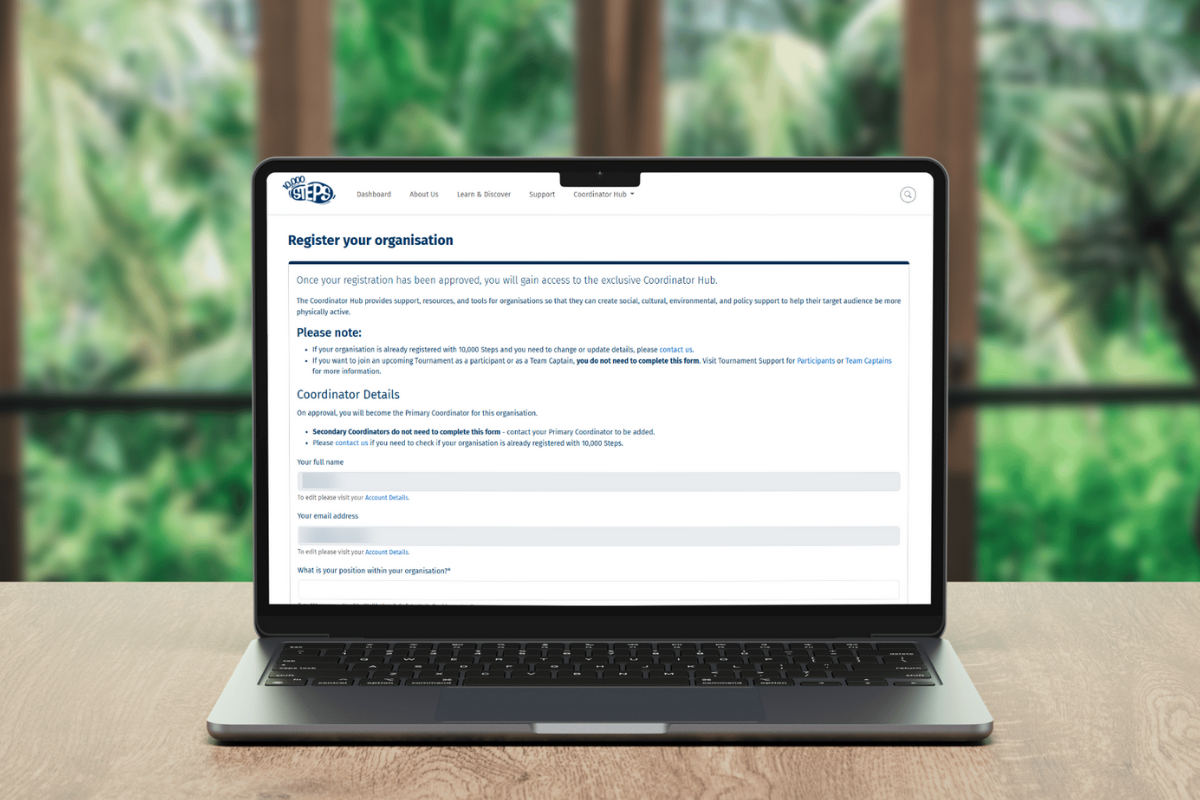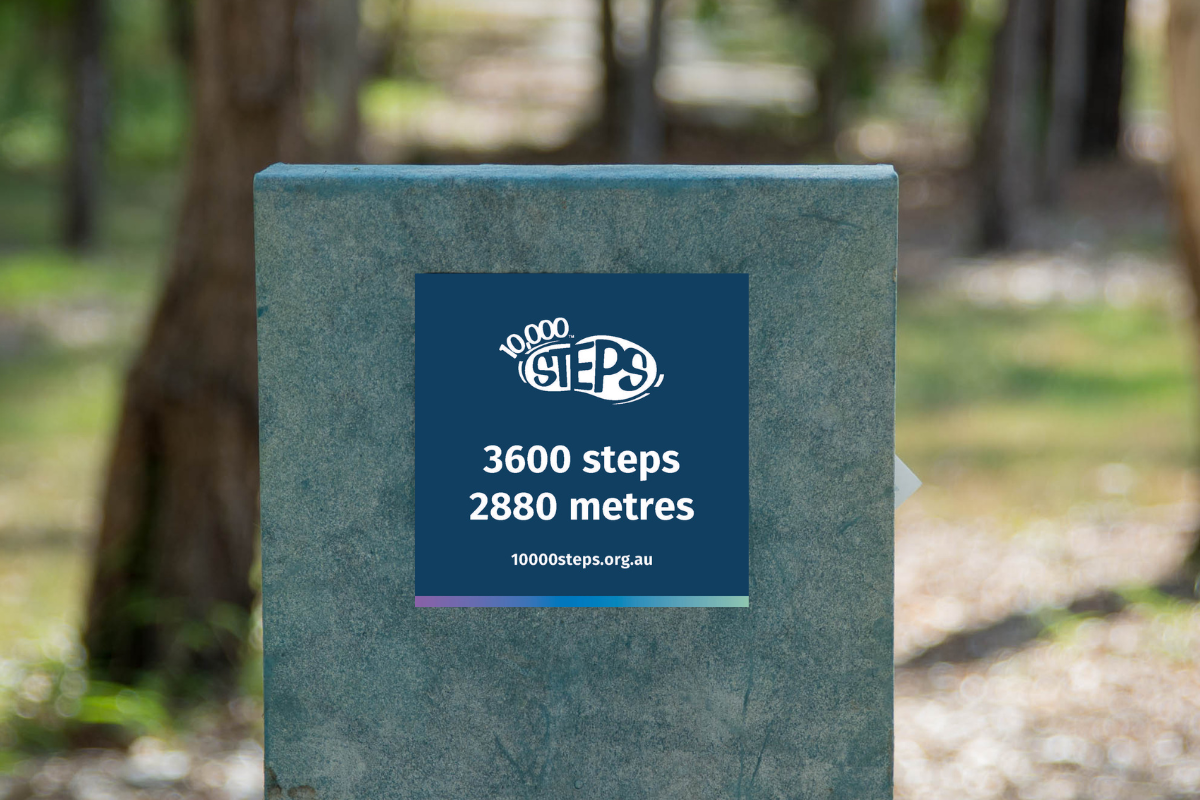The 10,000 Steps Program is an evidence-based initiative that helps individuals, workplaces, and communities increase physical activity through practical tools and strategies.
It promotes active living by encouraging step tracking, social connection, environmental improvements via walkway signage, and dog walking with a focus on responsible ownership.
Workplaces can access tailored resources at 10,000 Steps for Workplaces.
Get started as a 10,000 Steps Coordinator:
To access the exclusive Coordinator Hub, first register as an individual, then register your community as an organisation. The Hub is for those planning to implement 10,000 Steps strategies locally. Just follow three easy steps to begin!

Step 1. Register as an Individual
Register as an individual and verify your email to access your personal 10,000 Steps account. Log steps, view stats, join Challenges, create Groups, enter Tournaments, and more. Already a member? Log in.

Step 2. Register your Community
Once you've signed up as a member, register your community as an organisation to access Coordinator features for implementing 10,000 Steps strategies. Our team will review your registration and contact you if more details are needed.

Step 3. Access the Coordinator Hub
Once your organisation is approved, you'll gain access to the Coordinator Hub, your central space for accessing resources, guides, support and promotional materials to encourage physical activity in your community.
Physical Activity in the Community
More than half of adults don’t meet recommended activity levels, increasing the risk of chronic disease, obesity, and poor mental health. Busy schedules and sedentary routines are key factors. Using 10,000 Steps strategies, communities can improve health, support social connection, and make better use of walking trails and green spaces. Benefits include lower disease risk, better mental wellbeing, stronger social ties, safer walking areas, and increased collaboration among local stakeholders.
10,000 Steps for Communities
The 10,000 Steps program encourages physical activity through simple daily habits.
Key benefits and features:
- Encourage participation by inviting community members to join, set goals, track steps with activity trackers or pedometers and monitor progress
- Promote daily movement by highlighting benefits of being active in nature
- Share evidence-based information through Learn & Discover articles on social media and other channels
- Highlight local areas such as accessible, dog friendly walking paths, beaches, trails, playgrounds, and green spaces
- Support active transport by encouraging walking or cycling to work
- Provide practical tips to be more active, like taking the stairs, walking the dog, or moving during phone calls

10,000 Steps for Individuals
Support your community by encouraging access to the free 10,000 Steps Program. Individuals can:
- Set a daily step goal, find ways to move more, and track progress
- Increase awareness of activity levels and stay motivated
- View step statistics and monitor trends over time
- Join monthly Challenges to stay engaged
- Connect with Friends and create Groups for support and accountability

Community Tournament
Bring your community together with a step challenge through Team Tournaments. These are a fun way for workplaces and communities to increase physical activity and strengthen connections. A Tournament involves:
- Forming teams and encouraging daily movement
- Using pedometers or activity trackers
- Recording steps on the website or mobile app over a set timeframe
Tournaments require an active Organisation Membership Subscription.

Dog Walking Strategy
The Dog Walking Strategy helps councils promote physical activity through responsible dog walking. It includes:
- An A3 flyer and DL brochure for community distribution
- Promotion of off leash areas and responsible dog ownership
- Support for increased daily movement through dog walking

Walkway Signage
The 10,000 Steps Walkway Signage supports wayfinding in local communities by connecting walkers with destinations and trails. Free resources include:
- Design guidelines
- Sign design files
- Customisable map brochure
These materials can be adapted to suit local needs and help promote walking in your area.